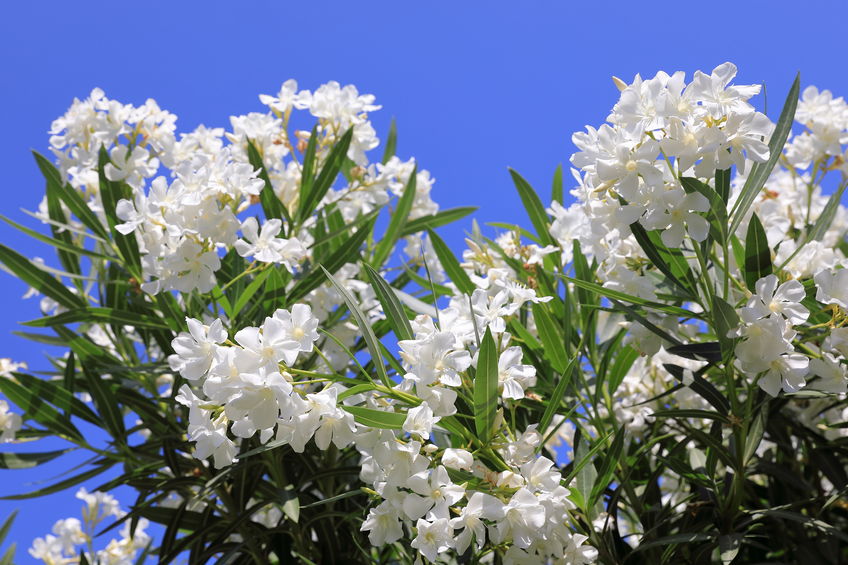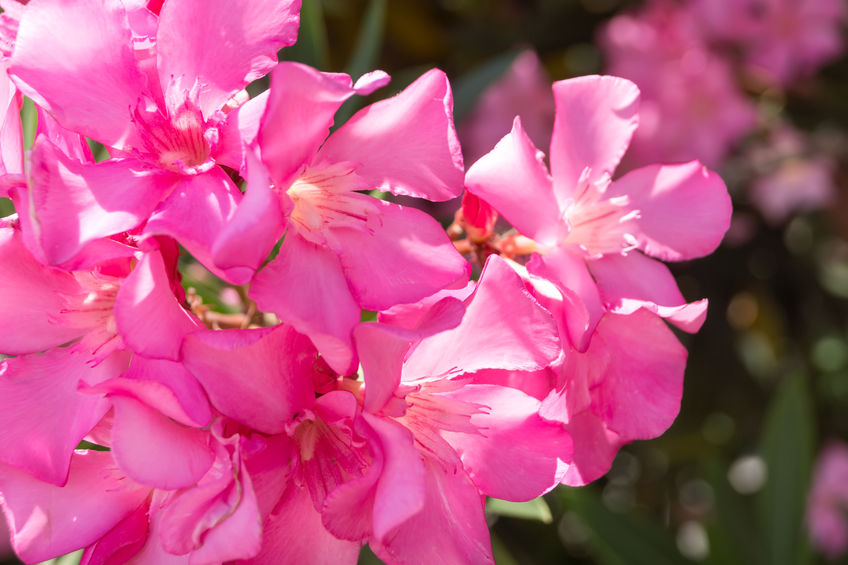Any among you that have visited the Mediterranean regions on your holidays will surely remember seeing these beautiful plants lapping up the sunshine. Oleanders (sometimes called Nerium Oleander) are a delightful shrub with willow-like leaves and single or double white, cream, pink or red flowers with fragrance. If you dream of bringing the Mediterranean look to your summer patio then Oleanders are the perfect plant to achieve this image.
Although some suppliers insist that these plants are hardy, I would still suggest giving them winter protection in all but the very mildest areas of the UK. They thrive in a sunny situation in the garden, mimicking their more exotic origins. They are far happier in the garden after risk of frost has passed, and moved to a sheltered spot and protected with fleece in milder areas in winter, or in colder areas they prefer the comfort of a frost free conservatory or greenhouse.
Because it is often necessary to move them in winter, they make an ideal pot specimen. They bask in the heat and allow us to bring a hint of sunnier climes to our British gardens. Coupled with potted palms such as Phoenix Canariensis (Canary Island Date Palm), a sunlounger and a glass of sangria, we can almost believe we are on our holidays.
The gorgeous blooms will also add scent to our patios from through summer and into the autumn. Bean-like seed pods are an added attraction after flowering. They should be potted up in a loam-based compost such as John Innes No. 3. A terracotta pot is ideal, not only for the Mediterranean image, but also the weight of the pot helps to stop them from toppling in high winds. They can reach a height of at least six feet or more but can be trimmed. They flower on new shoots of the current season’s growth, so prune in late winter or early spring.
Water freely throughout the summer and feed fortnightly with a balanced liquid feed. They can then be kept on the dry side through the winter. Enjoy sunbathing next to yours this summer (fingers crossed).
To view a selection of Oleanders at YouGarden click here
Mark Snelling
Important: Contact with oleander foliage and its sap may irritate the skin. All parts of the Oleander plant are toxic if ingested.
If you have enjoyed reading our blog post then why not fill in the form provided to allow us to send you our blog posts and newsletters by email.



